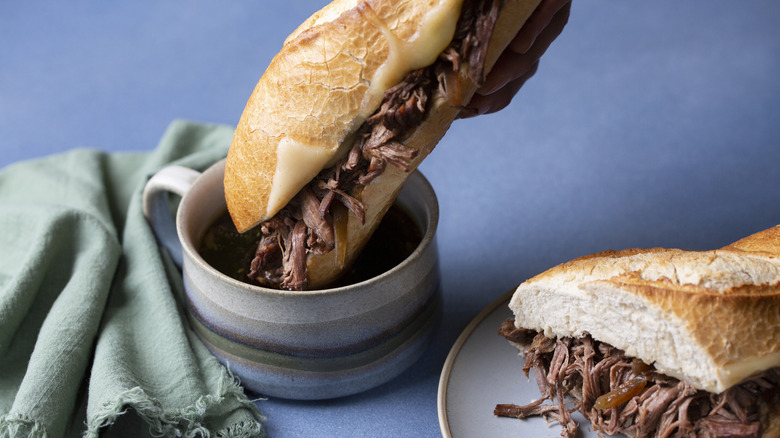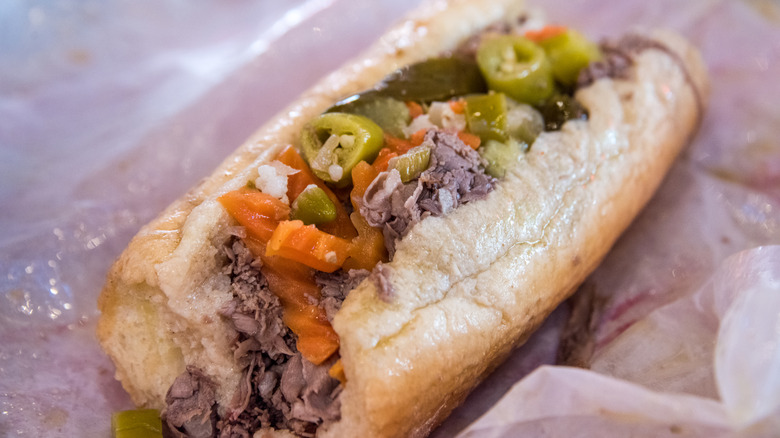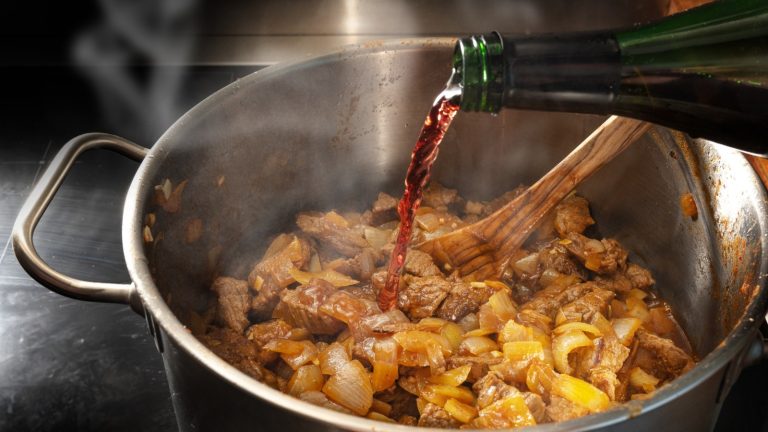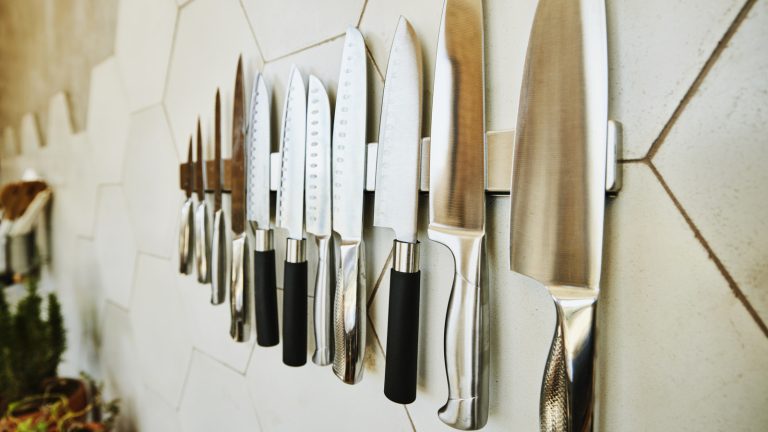Among all the easily confused dishes in the world, the French dip sandwich and the Italian beef sandwich are high on the list. Both are made with thinly cut roast beef, and both have the potential to be messy, since a customizable moistening with jus (or “gravy”) is one of their major draws. Both are even named for a country they didn’t originate in. On the surface, the two sandwiches seem to have more similarities than differences, which is arguably true. Bite into one of each, however, and you’ll discover a significantly different flavor profile attributable to the subtle but important distinctions between them.
Aside from their respective origins — one on each end of the United States — the main differences between the French dip sandwich and the Italian beef sandwich are the type of bread typically used and the toppings and garnishes that go on them. That may not sound like much, but to your taste buds, it’s more than enough to create a distinctive culinary experience.
What is a French dip sandwich?
The French dip is a Los Angeles native that likely originated from one of two sandwich shops: either Cole’s in 1908 (for a customer experiencing oral pain who special-ordered softer bread), or Philippe the Original in 1918 (a happy kitchen accident). Both restaurants still make two of the best French dip sandwiches in the United States.
A French dip essentially looks like a big ol’ wet roast beef sandwich served with a side of au jus, a thin, broth-like sauce made from the drippings the beef renders during roasting. While eating, you can dip the sandwich in the jus, hence the “dip” in the name. When ordering, common descriptors for just how wet you want your French dip are “single dip” (where half the sandwich is pre-dunked in juice for you), “double dip” (where the full sandwich gets dipped) and “wet,” which gets you a thoroughly saturated sammie.
The bread is typically a crusty French baguette – a robust choice that maintains some of its chew through the dipping process — and the meat is sliced top or bottom round, the best cut of beef for both a French dip and an Italian beef. Cheese goes on the sandwich (Swiss is a popular choice), as does a spread of hot mustard over the meat, both of which contribute to its signature flavor.
What is an Italian beef sandwich?
Fans of the FX series “The Bear” may already know that the Italian beef sandwich is Chicagoan to the max (it’s the signature dish of protagonist Carmy Berzatto’s original family restaurant, fittingly called The Beef). This big, sloppy roast beef sandwich most likely originated in the 1920s as a way to feed a lot of guests at a “peanut wedding” – essentially, matrimony on the most economical budget possible. Like the French dip, precisely who had this culinary epiphany is a matter of debate, but common lore is that it was one of two street-food peddlers, either Anthony Ferrari or Pasquale Scala.
Unlike a French dip, you won’t usually see an Italian beef served with a side of jus for dipping; the uniquely seasoned sauce (or “gravy,” to use the Chicago vernacular) is certainly present in and on the sandwich, though. Like the French dip, you can specify how messy you want it when ordering. Per the Chicago lingo, for very little juice, ask for it “dry.” Get it served “wet” if you want your bread juicy. And for a superbly soaked sandwich, a “dipped” Italian beef is analogous to a “wet” French dip.
Expect a soft French roll when you order an Italian beef — not the crusty baguette of the French dip. The traditional toppings are also unique and just as customizable in quantity as the gravy. You’ll find roasted peppers (hot, sweet, or both) and — if you ask for your sandwich “hot” – Chicago-style giardiniera, a veggie medley relish that’s pickled in vinegar before getting marinated in olive oil. It’s an explosion of rich, savory, spicy flavors different from (but perhaps equal to) the taste of a French dip.







